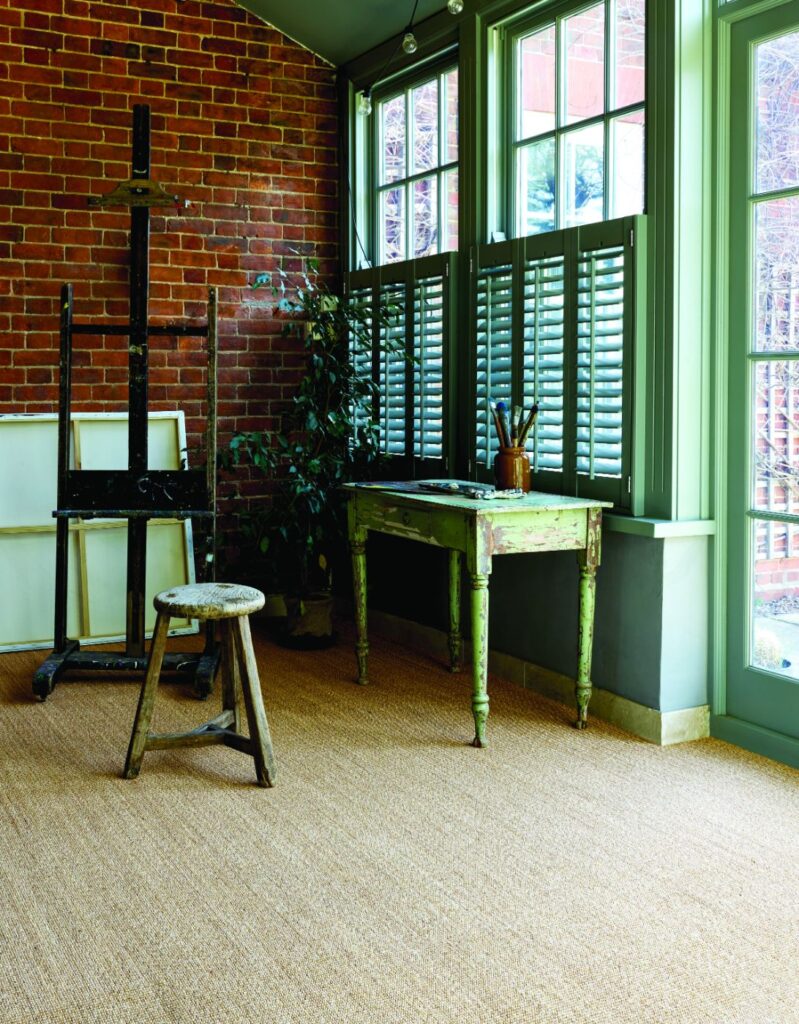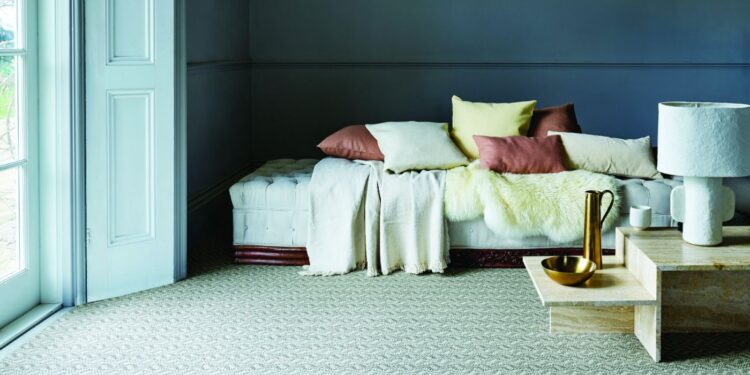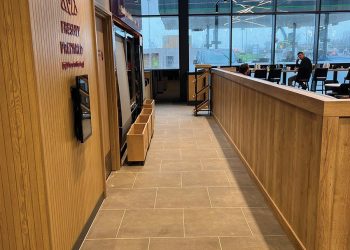2020 was an extraordinary year, with millions of people being confined to their homes for long periods of time. Consequently, as we adapt and return to a more normal way of living, awareness has never been higher of the importance of our internal environments, or of how the air we breathe can impact our lives.
Achieving a good level of indoor air quality (IAQ) is about more than just ensuring spaces are well ventilated. It also requires thoughtful specification of the internal finishes, informed by a clear understanding of how options such as natural materials can help to safeguard and improve indoor air quality.
Why is indoor air quality important?
It is widely recognised that most people today live in urban areas and spend around 90% of their time indoors. This long-standing statistic has been further backed up by a study carried out with 1000 UK and US office workers in 2018, which discovered that on average they spent just 37 minutes a day outside. With this in mind, there have been numerous studies demonstrating that poor IAQ can significantly affect our health and wellbeing, our productivity and even our ability to make decisions.
Whilst the focus in this research is often on the work environment, it is also crucial to consider conditions at home. We typically think of air pollution as an external issue, caused by things like traffic fumes or industrial activity. However, in September 2019 a report into ventilation and indoor air quality in new homes published by MHCLG and Aecom, identified that concentrations of volatile organic compounds (VOCs) were as much as 20 times higher than outside. These compounds are the most common source of indoor air pollution and can have significant health impacts on occupants.

What are VOCs?
VOCs are emitted by a variety of materials within a building, including cleaning and building products, carpets and paints. Under the Volatile Organic Compounds in Paints, Varnishes and Vehicle Refinishing Products Regulations 2012 (VOC Regulations 2012), VOCs are defined as “any organic compound having an initial boiling point less than or equal to 250 °C measured at a standard pressure of 101.3 kPa”. This characteristic is what enables them to vaporise and enter the surrounding air at standard room temperatures.
These invisible emissions have been linked with a variety of health issues including shortness of breath, dizziness, headaches and even damage to internal organs and the central nervous system, depending on the length and concentration of exposure. As might be expected, children and those with underlying health conditions have been identified as being the most vulnerable to the effects of this indoor pollution.
It is vital, therefore, that careful consideration is given to all products which could emit VOCs, whether in a work or a home setting. As Parliamentary Post Note 366 highlights: “one way to limit indoor emissions is to choose products wisely”. This is particularly important for flooring as these materials cover a wide surface area in a space.
Natural benefits
Government’s Clean Air Strategy published in 2019 specifically mentions carpets as a potential source of Non-methane VOCs (NMVOCs) and sets a target of a 39% reduction in these emissions by 2030 against the 2005 baseline. Therefore, what type of carpet materials would be considered ‘wise’ to keep NMVOCs as low as possible?
An obvious choice is to opt for natural materials, such as wool, sisal, seagrass, coir and jute. These materials are all non-toxic, releasing no VOCs. Although they are durable in use, at end of life the natural materials used within the carpet are biodegradable. They are also anti-static, can be inherently hypoallergenic and may even actively help to reduce VOCs in the atmosphere.
Wool , for example can absorb other VOCs and airborne contaminants, such as cooking fumes, deodorants, cleaning chemicals and smoke. It has been found to have the ability to absorb a range of potentially harmful chemicals and pollutants including formaldehyde, sulphur dioxide and nitrogen oxides from the air. Not only does it neutralise these contaminants, it will not re-emit them, even when heated, and can keep them trapped in its core for as long as 30 years.
Wool is also hygroscopic, which means that it responds to changes in humidity, absorbing moisture from the atmosphere when conditions are damp and releasing it when they are drier. This helps to combat the risk of mould and fungus growth and does not encourage the breeding of dust mites, one of the biggest triggers of asthma attacks.
Sisal, seagrass, coir and jute have also been shown to be hypoallergenic, as the plants they derive from have anti-microbial properties. Hard wearing and manufactured from renewable sources, these materials can help to meet the requirements of standards such as BREEAM, LEED and WELL.
With natural materials you will be able to breathe easy from the outset, knowing there are no harmful toxins being released into your living or working space. It’s not just about the fact that they emit no VOCs, have hypoallergenic properties, and sustainable material sourcing and end of life – materials such as wool, sisal, seagrass, coir and jute also bring the less easily measured sense of wellbeing that comes from being in contact with naturally occurring materials, rather than synthetic ones – the fundamental pull of humanity towards the natural world that has become so important over recent months.
With the potential offered by different weaves and textures, blended materials such as sisool (wool and sisal), and combinations of calming natural, neutral shades with vibrant dyed colour palettes, there is also no need to compromise on design in favour of the clear health benefits that these products bring.
Specify for health, wellbeing and happy customers
As we adjust to new ways of being, clients are likely to be more sensitive towards their internal environments, both aesthetically and from a health point of view. Specifying beautiful, natural floor coverings that do not emit VOCs and can offer protection against allergies, even helping to purify the air, can only make for happy customers.
About Crucial Trading
Rooted in 100% natural materials and innovative design, our products reflect our ethos. As members of The Carpet Foundation, we adhere to the rigorous standards of service and consumer codes of practice, approved and monitored by the Trading Standards Institute. With a wide range of products available we are committed to providing expert, impartial advice and to ensuring that you find the perfect floorcovering for your personal requirements.
Crucial Trading
01562 743747
sales@crucial-trading.com
Instagram @crucialtrading
www.crucial-trading.com












